Apr 21, 2025
Apr 21, 2025
by Rachna
The origin of relation between Textile and Architecture cannot be specified on a time-line. They both go hand in hand. The presence of textiles in architecture can be viewed not only in the interiors of a building e.g. upholstery, drapery, detailing, wall papering etc. but can also be felt in the construction of the architectural structures.
Influence
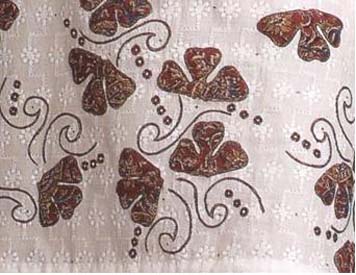 No architecture can be complete without the presence of the textile fabric. The usage starts right from upholstered furniture in drawing rooms, cushions and spreads in bedrooms, runners and covers in the dinning halls, the draperies in the kitchens and bathrooms to the curtains, tapestries and other endearments in the houses. The corporate world, theatres, multiplexes, hospitals, the shopping malls, retails, any Architectural structure you name it; Textiles is bound to be there as a basic cover or just to add color and zing. These days textiles is vitally used to add the oomph factor to the buildings.
No architecture can be complete without the presence of the textile fabric. The usage starts right from upholstered furniture in drawing rooms, cushions and spreads in bedrooms, runners and covers in the dinning halls, the draperies in the kitchens and bathrooms to the curtains, tapestries and other endearments in the houses. The corporate world, theatres, multiplexes, hospitals, the shopping malls, retails, any Architectural structure you name it; Textiles is bound to be there as a basic cover or just to add color and zing. These days textiles is vitally used to add the oomph factor to the buildings.
But that’s not all; importance of textiles and its role can also be seen and felt in the construction techniques and other technical architectural, details, terminology and styles.
Application
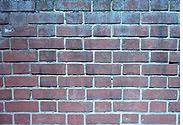 First let us take the basic construction of a wall. The various bonds, the units in a wall are nothing but a microscopic structure of a fabric. Avoiding of the vertical joints while construction of a wall, adding to its strength is naturally present in a fabric. Its nothing but interweaving of threads to form a piece of textile structure: the fabric.
First let us take the basic construction of a wall. The various bonds, the units in a wall are nothing but a microscopic structure of a fabric. Avoiding of the vertical joints while construction of a wall, adding to its strength is naturally present in a fabric. Its nothing but interweaving of threads to form a piece of textile structure: the fabric.
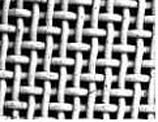 The Toothing in a wall can be explained similarly. When a carpet is being woven and also in looms while ending a particular piece, the loose ends (usually wefts) are assimilated in a way mostly knotted, so as another swatch can be attached or the same piece which is complete for now; can be extended in future.
The Toothing in a wall can be explained similarly. When a carpet is being woven and also in looms while ending a particular piece, the loose ends (usually wefts) are assimilated in a way mostly knotted, so as another swatch can be attached or the same piece which is complete for now; can be extended in future.
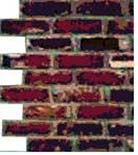 The same trend can be seen in building construction in the form of toothing a very important technique when it comes to further extending the existing wall.
The same trend can be seen in building construction in the form of toothing a very important technique when it comes to further extending the existing wall.
When it comes to the construction of wall another technique followed especially in Kashmir Architecture and has earned quiet a name in construction in earthquake prone areas not only in India but more so internationally, is Dhajji Wall Construction.
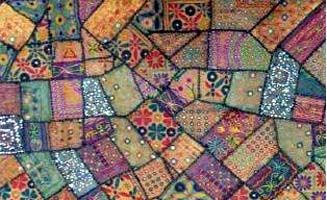 This construction technique has been inspired from Dhajji quilt work- the patch quilt work. As different pieces of fabric are stitched together to get an aesthetically beautiful and structurally strong textile piece, the same work pattern when followed with the combination of stone and timber, provides us in architecture with such a wall that can sustain many a shocks in an earthquake prone region. Like the textile inspiration, there are many patterns that can be achieved in this wall construction form.
This construction technique has been inspired from Dhajji quilt work- the patch quilt work. As different pieces of fabric are stitched together to get an aesthetically beautiful and structurally strong textile piece, the same work pattern when followed with the combination of stone and timber, provides us in architecture with such a wall that can sustain many a shocks in an earthquake prone region. Like the textile inspiration, there are many patterns that can be achieved in this wall construction form.
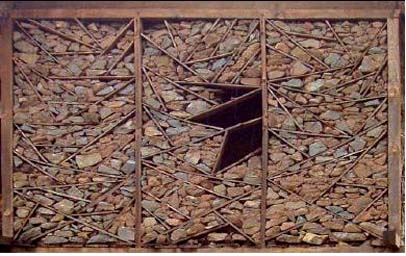 A fabric goes through many stages right from choosing thread: 1-ply, 2-ply; so is the case in masonry: 1st class, 2nd class, ashlars, rubble. At times the natural color of the soot: thread is retained which is closer to the exposed masonry work in architecture.
A fabric goes through many stages right from choosing thread: 1-ply, 2-ply; so is the case in masonry: 1st class, 2nd class, ashlars, rubble. At times the natural color of the soot: thread is retained which is closer to the exposed masonry work in architecture.
Other ornamental techniques followed for fabrics in textiles are dyeing : the most common one , the colors, the chemicals and the dyes are decided keeping in consideration the type of fabric, which is equivalent to white-washing, painting, distempering, considering the surface to be colored.
The walls can be divided into various types: load-bearing walls, partition walls, the curtain walls, so is the case with textiles. One has endless varieties in drapery: heavy, medium, light, shear, the list goes on.
The doors, windows, ventilators: the openings in the walls can be compared to the appliqué work or cut work in textiles. The numerous styles in wall openings are as matchless as varied patterns in appliqué designing. The hemming of a fabric is what beading, nailing in joining is to fixing details in construction.
The tent structures are unthinkable without textiles. The bridges, the roof styles especially the saddle shaped roofs is inspired from the natural flare and fall of a fabric. Everywhere we look in a building and its construction, right to the finished structure, the influence of textiles is undeniable.
19-Sep-2009
More by : Rachna